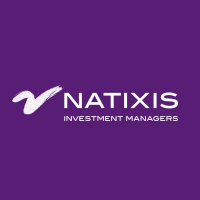All topics
Emerging Market Trends
Demographic and Market-Related Trends in Emerging Economies
In order to capitalise upon opportunities in emerging markets, one must first understand the lay of the land. What trends are taking place across different sectors? How are EM economies coping with debt burdens and post-pandemic spending? Additionally, what are the nuances in the capital market environment that create country-specific opportunities?
The following list of papers contains several guides on the emerging market landscape, as well as overviews on EM trends and outlooks for emerging market debt and equity investors.

Emerging Markets Reshaped by Tech and the Consumer (Manulife IM, 2021)
Manulife’s paper argues that ongoing rapid changes in emerging markets present a range of opportunities for investors. The MSCI Emerging Markets Index has seen the proportion of consumer discretionary, information technology, and communication services sector entities rising to nearly 50% of the index at present, from approximately 30% in 2010.
The Role of Chinese Assets (BlackRock, Jun 2021)
For compliance reasons, this paper is only accessible in certain geographies
China has emerged from the pandemic with renewed confidence – just as it did after the global financial crisis (GFC). Growth has bounced back to trend and foreign direct investment inflows are surging, according to data from China's National Bureau of Statistics and the Ministry of Commerce. A stable economic backdrop has made authorities more comfortable emphasising structural reforms over short-term growth targets, in BlackRock's view.
The Great Transition: Demographic change in China (Janus Henderson, Jun 2021)
For compliance reasons, this paper is only accessible in certain geographies
Janus Henderson discusses recent census data in China that points towards lower fertility rates and a rapidly ageing population.
Opportunities for Yield and Income in China (BlackRock, Jun 2021)
For compliance reasons, this paper is only accessible in certain geographies
The world’s hunt for income and yield has been an issue for decades that will likely continue. People are living longer and retiring in record numbers, while Covid-19 triggered a race to near- zero interest rates in developed countries. The U.S. currently has $17+ trillion worth of bonds with negative yields, which is roughly the size of the entire Chinese bond market, where most bonds yield more than 2.5%. BlackRock believes the recent strong net inflows validate the attractiveness of Chinese fixed income markets and are indicative of future flows.
China Calling: The rise of Chinese bond markets (Franklin Templeton, Jun 2021)
For compliance reasons, this paper is only accessible in the EMEA region
Franklin Templeton takes a deep dive into the inner workings of the Chinese bond market and offers guidance for investors considering taking the plunge.
China's Big Tech Crackdown (Aviva Investors, Jul 2021)
For compliance reasons, this paper is only accessible in certain geographies
Aviva Investors highlights the swift riposte from Chinese regulators to curb the growth of China’s largest technology stocks.
Guide to Emerging Markets Investing (Robeco, Jun 2021)
Robeco’s comprehensive guide to emerging markets serves as a handy reference guide to students of the subject, both old and new. Outlining the asset class, they identify the risks and opportunities, while offering suggestions on various approaches, before finally explaining sustainability within an EM context.
Emerging Asian Capital Markets Review (CFA Institute Research Foundation, 2021)
CFA Research Institute offers a walkthrough guide to the Asian capital markets, offering insights from local authors into 11 of the region’s markets.
EM's Post-Pandemic Fiscal Adjustment (PGIM Fixed Income, May 2021)
PGIM Fixed Income looks at the capacity of emerging economies to increase revenues to help fund the servicing of increasing debt burdens and ongoing pandemic related spending.
EM Debt Outlook: The post-pandemic recovery takes shape (UBS AM, Jul 2021)
UBS AM highlights the key drivers behind a resurgence in performance in emerging markets during Q2. Markets have been aided by a rally in commodities but have also benefited from IMF support and accommodative fiscal and monetary policy across developed nations. However, the rally has not been consistent across all markets, leading to opportunities into the Q3 and beyond.
Emerging Markets Debt Monitor Q2 2021 (Eaton Vance)
For compliance reasons, this paper is NOT accessible in the United States and Canada
In their Quarterly Review of emerging market debt, Eaton Vance highlights the key drivers behind a resurgence in performance during Q2. Markets have been aided by a rally in commodities, but have also benefited from IMF support.
Political Risk and EM Equities: An index framework (S&P Dow Jones Indices, 2021)
S&P Dow Jones indices has collaborated with GeoQuant, an AI-driven political risk data firm, to devise a best-in-class Emerging Markets Political Risk-Tilted Concept Index. Systematically incorporating a political risk factor, the emerging market asset allocation decisions can potentially deliver outperformance based on reduced overall volatility and a degree of insulation from downside risk.
Global Emerging Markets: Country allocation review (Federated Hermes, Jun 2021)
For compliance reasons, this paper is NOT accessible in the United States
Federated Hermes’ paper outlines their emerging markets country allocations, given the uncertain outlook for global markets.
Outlook on Emerging Markets (Lazard AM, Jul 2021)
Lazard AM's outlook piece for emerging markets finds that opportunities exist in high-yield corporate debt, high-yield hard currency sovereign debt and local currencies, fuelled largely by a decline in the U.S. dollar.
A Sustainable Future in Global Emerging Markets (Franklin Templeton, 2021)
For compliance reasons, this paper is only accessible in the EMEA region
The Franklin Templeton Emerging Markets Equity Team assesses the sustainable investment opportunity in emerging markets – from macro driven factors to identifying appropriate companies and measuring the real-world contribution of key holdings.




